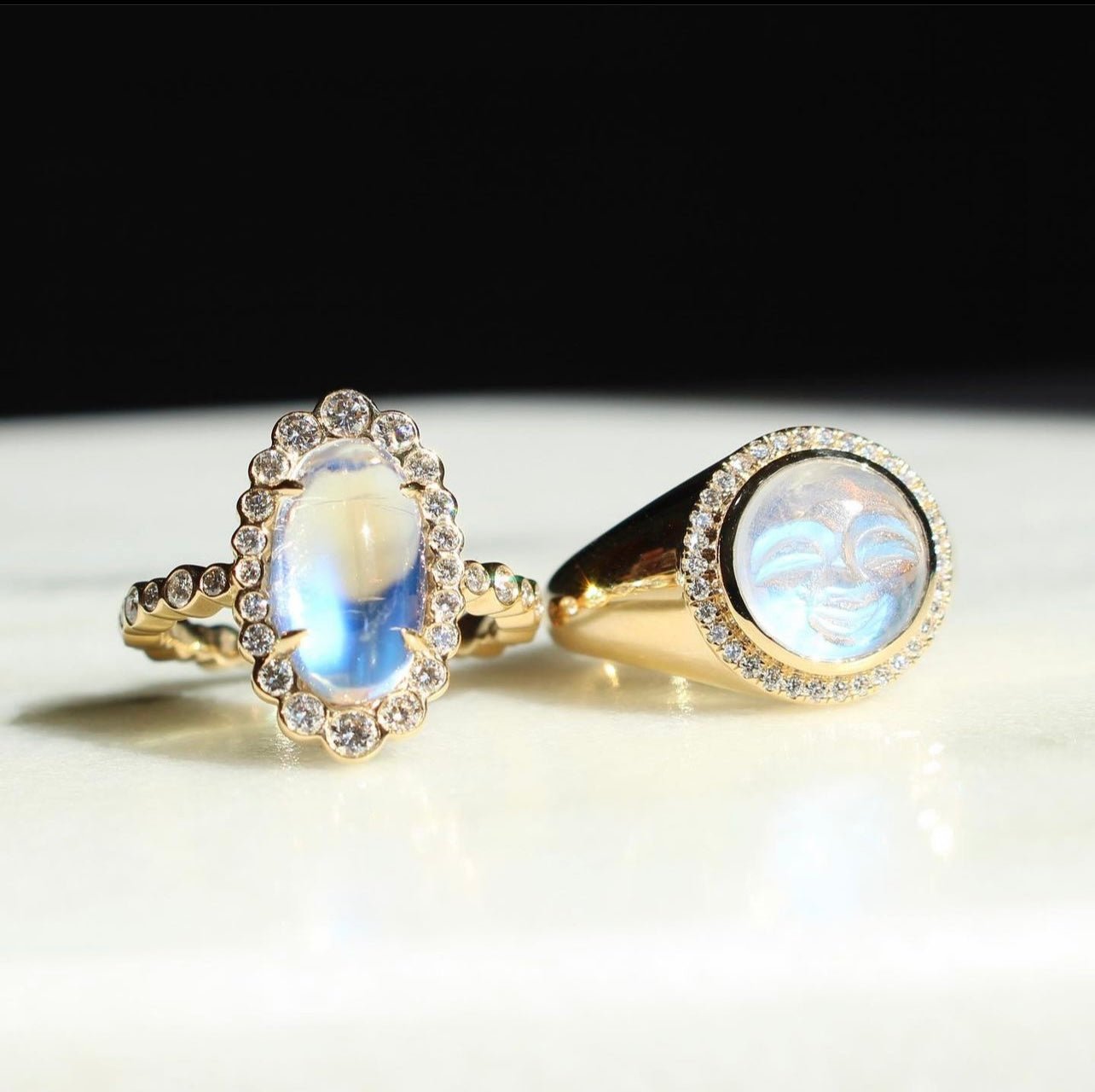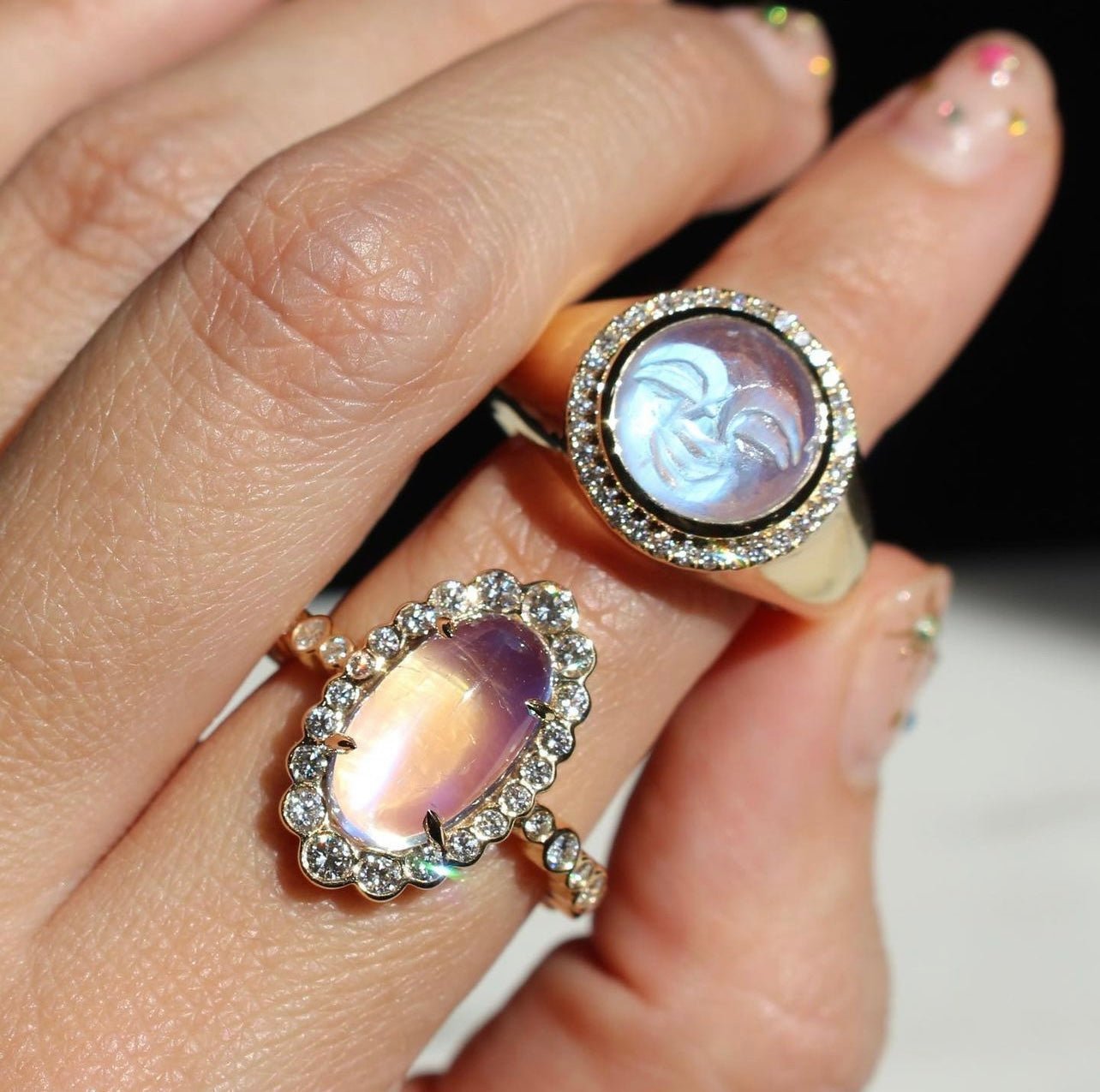The shiniest stone that reflects the best under every type of lighting might be entirely fraudulent. Typically, the bigger the gem is, the more likely that it is fake. This is a hard pill to swallow for many consumers, who go off of their instincts in the jewelry department.
If you aren’t too worried about long-lasting value, and you’re okay with replacing a piece every few years, then synthetic or low-quality pieces might be an alright fit. However, if you’re anything like us, you want to know exactly what you’re spending your money on and what it accurately retails in the competitive world of fine jewelry.
When it comes to fine jewelry, diamonds are one of the most popular items. This is likely because they are timeless and classy, simple yet bold.
They turn heads without being obnoxious, and they can truly be used in any way. If you’re into flashy engagement rings, you’re in luck. Yet, if you like tiny, diamond stud earrings, there’s always something for you.
What sets natural diamonds apart from imitations is their high quality. In order to determine this, a diamond grader has to test a range of criteria against each stone. We call these criteria diamond rating charts, and they’ve developed in popularity over the years.
Allow us to walk you through the jewelry world as we dive into the behind-the-scenes of diamond grading and offer some higher clarity on what to expect from a grading report.
What Makes Diamonds Unique?
This is an excellent question, and one with a fairly straightforward answer. Gemstones have different methods of grading based on what characteristics of theirs are individually valued. What might make one gemstone exceed in price could hinder the tag of another.
For diamonds, there is little variety apart from superficial factors. Since they are mostly universal in properties, creating a shared chart to test all samples against is simple.
In theory, these charts could be developed for each individual type of gem. In fact, some gems use analogous criteria. It’s best to keep each type of stone separate in grading due to their discrepancies from one another.
Since diamonds are classic, the demand is high — as is the demand for the highest quality. It makes sense that gemologists would publicly develop a universal means of rating them because it is a well-used tool for consumers and jewelers alike. To determine diamond quality research is critical: Do some on your own but always consult a skilled grader.
What Is the Gemological Institute of America?
The GIA, better known as the Gemological Institute of America, works with precious stones every single day. Not only do they study them, but they also grade them on their findings. It is convenient to develop rating charts so that all of the gemologists are on the same page when they give a gem a rating.
A GIA Graduate Gemologist is an accredited program that most jewelers should have completed before entering their profession. It provides them with the education they need to accurately identify and work with fine jewelry products based upon the science of the stones. The Applied Jewelry Professional Diploma is another reputable certification through the GIA that focuses on store marketing.
What Are the 4 Cs?
The basics of diamond rating, without a scale, contain the 4 Cs. This easy trick was developed by the Gemological Institute of America, a reputable source for all things gemology. The technique categorizes the quality of diamonds based on four things: their color (or lack thereof), clarity, cut, and carat.
Diamond colors vary greatly, but most people seem to prefer clear or colorless stones. This is because they are the most iconic look, and they go with everything when worn in jewelry.
Therefore, diamonds that are colorless are the most sought after and the most expensive. Clarity ties in with this category — you almost always want a gem with little to no inclusions, which we call “eye clean.”
The cut of a diamond is judged after the stone has been worked. If a diamond has an “Excellent” faceting, it has been worked in a way that makes it shine from all angles. The goal when cutting any stone is for the ultimate level of luminescence. If a diamond is cut in a haphazard fashion, this can result in a “poor” cut grade.
The weight of a diamond is defined as its carats. You can expect a piece of jewelry with heavier diamonds to be more valuable. As carat weights increase, you can expect your budget to do the same.
What Is the Diamond Clarity Scale?
Clarity is such an important factor in determining the value of a diamond that the GIA actually developed its own Diamond Clarity Scale. There are six separate rankings in total, ranging from Flawless (FL) to Included (I1, I2, and I3).
This emphasizes just how imperative an eye-clean appearance in a gem is to not only the consumer but gemologists alike. Flawless diamonds have no visible inclusions or blemishes when examined by the eye.
It is not uncommon for diamonds, which are merely pressurized and heated carbon, to have inclusions. Frequently seen types of inclusions include crystals, feathers, and clouds. If they are not visible without a microscope, the diamond will be worth more.
However, a jeweler needs to disclose if there are diamond inclusions you cannot see with a naked eye before you make a purchase. Even if you can’t see them easily, clarity characteristics can easily affect diamond prices.
For example, you can have a diamond that is labeled as Very Slightly Included (VS1, VS2), with only slight inclusions visible under a 10x magnification with professional equipment, but this still falls in the lower end of the clarity scale.
What may appear unimportant issues with a diamond to the average person looking with an unaided eye can actually be quite the problem for a gemologist grader.
What Is the American Gem Society?
Founded in 1934, the American Gem Society works similarly to the Gemological Institute of America. They evaluate and rate diamonds based on their own set of rules. The AGS specifically developed a separate chart from the GIA because they deemed the former too complicated.
The AGS Diamond Grading System looks at both color and clarity with the same ranking setup. Instead of confusing letters, it focuses solely on numerical labels 0-10. The highest number on both scales, 10, is the worst in quality. Diamonds with ranking closest to 0 are the best.
The overall rating of a diamond per the AGS is based upon (in order of importance) cut, color, clarity, and carats. When compared to the general ratings of the industry, the AGS leans more specific, fitting 1-2 subsets in per larger grouping. For example, the AGS Ideal and AGS Excellent overall ratings both fit inside the Industry rating Excellent.
Color Grade
The AGS color rating defines a 0-1 score as a colorless diamond. A 1.5-3 score is near colorless. Anything from 3.5-to 4.5 has a faint color. From 5-7, the diamond has a very light color. 7.5-10 is classified as light. In comparison, the industry uses alphabetical ratings for color scale, which may be a bit more confusing since they begin with the letter D at colorless.
Diamond Clarity Grading
The AGS Clarity Scale is a simplified rating system of the GIA chart. However, that does not mean it is lax in its actual evaluation. The scale considers both plot representation and photography of each diamond before it gives it a rating.
It is pretty self-explanatory to read a chart that uses spelled out terms like Very Very Slightly Included and Included, as opposed to the abbreviations GIA adds.
Despite this, the root of both the AGS and GIA clarity rating charts are virtually identical, and they serve the same purpose. Your jeweler can feel free to use whichever one makes the most sense to their buyer.
If you prefer to be shown the evaluation of your diamond one way or another, simply ask; the jeweler should be able to get a certification formatted to your liking. This would only be difficult if you were working with a GIA gemologist who wanted to use their own method.
How Are Diamond Alternatives Rated?
Since diamonds have been on the market for centuries, it is not surprising that so many alternatives are available. Due to this reality, it is vital as a buyer that you are aware of the rating charts for these stones as well. Collectors need to be able to tell the differences between what is real and what is not.
For example, moissanite can look very similar to a diamond. Dr. Henri Moissan discovered it over a century ago, but it is more commonly lab-created in modern times. It looks nearly identical to a natural diamond, with the same hardness on the Mohs Scale (a 9.5) and excellent wearability and durability.
You might not be able to tell that it isn’t a real diamond unless you look at it under magnification with a gemologist. This is why it is so important to request certification for every diamond you purchase, regardless of the seller.
We Love Diamonds
Mark Henry Jewelry is known for our fascination with exotic gems like the ultra-rare stone alexandrite, but we also dabble in some diamond love.
Check out our Diamond Dusted Alexandrite Ring. It is the best of both worlds between exotic and fine jewelry, matching 1.33ct of oval alexandrite and 0.65ct of diamond pavé. The classic oval diamond shape creates a diamond ring with character; the alexandrite shines as the center stone, and the diamond halo and band shine in their own right.
A Brilliant Cut Above the Rest
If you question the authenticity of a diamond, reach out to an expert. GIA representatives are always available to help you and our own Mark Henry team. We want you to sparkle.
Sources:
Diamond Rating Chart & Diamond Grading Tools | American Gem Society
Learn How to Buy a Diamond with the GIA Diamond Buying Guide | GIA


Explore the thrilling world of Rocket Soccer Derby, where soccer, car gameplay, and simulation blend seamlessly to create a one-of-a-kind experience. https://rocketsoccerderby1.gitlab.io/